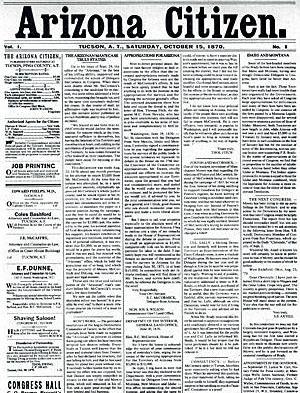 As negotiations with the Boston Globe‘s unions continued past a midnight deadline, The New York Times Co. filed notice with the federal government today of its plans to shut down the paper in 60 days. Such notice is required under federal law, but the filing of a Worker Adjustment and Retraining Notification statement doesn’t require the Times Co. to go through with its threats. The Globe unions called the move a negotiating ploy. The Times Co. says it is ready to go ahead and file a binding plant-closing commitment with the state today.
As negotiations with the Boston Globe‘s unions continued past a midnight deadline, The New York Times Co. filed notice with the federal government today of its plans to shut down the paper in 60 days. Such notice is required under federal law, but the filing of a Worker Adjustment and Retraining Notification statement doesn’t require the Times Co. to go through with its threats. The Globe unions called the move a negotiating ploy. The Times Co. says it is ready to go ahead and file a binding plant-closing commitment with the state today.
Tense negotiations continued through the weekend, with the Guild saying its offer exceeds the goals set by the Times Co. and the Times Co. raising the stakes even further by admitting that it had made a $4 million accounting error that would require the union to dig even deeper for cuts. The Boston Herald quotes a union official alleging that most of that oversight is actually bad-faith bargaining. Whatever happens, union officials said, expect large layoffs at the Globe. No one seems to think the Times Co. intends to carry through on its threats to shutter the 137-year-old paper, but it’s virtually certain that whatever Globe survives this negotiation process will be far smaller and weaker than the one that has dominated New England for decades. We’ll keep an eye peeled today, but you’ll probably find out quicker from Romenesko.
In Iowa, a Blueprint for Change
They’re shaking up the traditional newspaper model in eastern Iowa. Mark Potts sums up a blueprint for reinvention by the designated change agent at the Cedar Rapids Gazette that outline a vision of the publisher as a center of information, commerce and community. It isn’t about publishing, Steve Buttry says. “We need to become the connection to everything people and businesses need to know and do to live and do business in Eastern Iowa.” He goes on to list the many ways in which the publisher can expand its franchise, from delivering up-to-the-minute Twitter feeds to enabling visitors to buy concert tickets directly from its event listings page.
The part that will rub traditionalists the wrong way is Buttry’s vision of a new approach to revenue in which journalists will be just as responsible for the financial well-being of the company as sales reps. The wall between advertising and editorial is considered no man’s land in most newspaper companies, but Potts praises Buttry for having the courage to envision an alternative. Publishers can position themselves as intermediaries between their audience and local merchants and extract a small fee for enabling transactions. There is nothing dirty about thinking about the financial health of one’s employer. In fact, this economy doesn’t permit the luxury of old silos. Read Potts’ synopsis of how one news organization is changing the way it perceives its business. Read the entire 38-page blueprint document here if you want details.
Conde’s Outlook: Nasty
How bad is it in the upscale lifestyle magazine market? “Wired magazine posted a 57% drop in ad pages in the first quarter, while ad pages at fashion magazines W and Lucky were down more than 40% and 35%, respectively, for the quarter. Architectural Digest‘s ad pages were down 47%,” reports The Wall Street Journal in an article about Conde Nast’s decision to pull the plug on Portfolio magazine after only two years. The numbers make it clear why the decision was necessary: despite its paid circulation of nearly 450,000, Portfolio‘s ad pages were down 61% in the first quarter. The highly visible publication was launched with fanfare and an all-star lineup of journalists two years ago, entering the market dominated by Forbes and Fortune. However, luxury advertising has fallen off the table during the recession and Portfolio was still working off its startup costs. Advertising revenues would have to increase significantly in 2010 to support the business plan, and that just wasn’t going to happen. Some observers think the flight of luxury advertising from upscale magazines could be permanent.
It’s going to get worse, says MarketWatch’s John Friedman. In a short video clip, he says the business publishing market is over-populated and under-advertised. Every business magazine, even the most venerable titles, is vulnerable in an ad downturn like this one.
The J-School Paradox
The Capital Times of Madison, Wisc. Writes about the astonishing surge in journalism school enrollments. “According to an annual enrollment survey done by the University of Georgia, there were 199,711 undergraduates enrolled nationwide in journalism and mass communication schools in
2007 — a jump of 41.6 percent from 1997,” reporter Todd Finkelmeyer writes. “Meanwhile, a recent article on Forbes.com noted that journalism schools at Columbia University, the University of Maryland and Stanford University saw significant spikes in applications this past fall — 30 percent, 25 percent and 20 percent, respectively.”
The story goes on to quote several bright-eyed J-school students who aren’t at all worried about the 15,000 or so journalism jobs that have disappeared over the last 18 months. They believe that a market for quality reporting will always exist and hope that by the time they graduate, the jobs will be there. Professors are quoted saying that journalism teaches critical thinking, an essential skill that can serve a young person well in any profession. It appears that the University of Wisconsin at Madison is ahead of the curve, having revamped its journalism program nearly a decade ago to accommodate multiple media. Ironically, the Capital Times itself exited the print business more than a year ago and has been publishing solely online since then.
Miscellany
The Baltimore Sun laid off 30% of its newsroom last week with the cuts hitting disproportionately hard on senior editorial staff. About one third of those laid off were editors and managers, Editor & Publisher reports. They included both top editorial page editors. Newspaper Guild officials said the moves appeared to be part of a realignment of the news operation toward “multi-platform content,” whatever that is. A reduction of that size could presage a reduction in print frequency along the lines of what the two Detroit dailies are doing. The Sun has the handicap of competing against the Washington Post and other smaller dailies just to the south.
Canada’s National Post will suspend Monday publication during the summer in a cost-cutting move. No layoffs are planned.
The Reading (Pa.) Eagle laid off 52 people, or about 12% of its workforce.
The company that publishes the Vancouver (Wash.) Columbian has filed for Chapter 11 bankruptcy protection, but the issues apparently revolve around real estate investments and not business losses at the newspaper. The Columbian will continue to publish during reorganization.
 Billionaire investor Warren Buffett reads five newspapers every day, but he wouldn’t buy one at any price. “They have the possibility of going to unending losses…I don’t see anything on the horizon that causes that erosion to end,” says Bullett, who owns the Buffalo News and a piece of the Washington Post Company. He doesn’t intend to sell those ownership stakes, but he isn’t expanding them, either.
Billionaire investor Warren Buffett reads five newspapers every day, but he wouldn’t buy one at any price. “They have the possibility of going to unending losses…I don’t see anything on the horizon that causes that erosion to end,” says Bullett, who owns the Buffalo News and a piece of the Washington Post Company. He doesn’t intend to sell those ownership stakes, but he isn’t expanding them, either.
And Finally…
The New York Times has two stories that illustrate the severity of the industry’s crisis. It tells of Todd Smith, a reporter for the Suburban Journals chain of newspapers owned by Lee Enterprises, who was shot while on the job last year. That’s a pretty big sacrifice to make for one’s employers, so “On April 15 of this year, when Mr. Smith was called to a meeting at the Suburban Journals…he wondered if the staff had won an award for coverage of the massacre. Instead, he learned that he and several others were being laid off,” Richard Perez-Pena writes. The story also tells of Paul Giblin, a reporter for the East Vallely Tribune whose work won a Pulitzer Prize two weeks ago. Giblin was laid off last year and now works at a startup online news organization.

 If the new owners of the San Diego Union-Tribune are planning to reinvent the news operation, they made a surprising choice in
If the new owners of the San Diego Union-Tribune are planning to reinvent the news operation, they made a surprising choice in  If the past is any clue to the future, then the New York newspaper strike of 1962-63 may offer a glimpse of what a nation without daily newspapers would look like. Slate’s Jack Shafer has a wonderful account of what a news-starved city did when
If the past is any clue to the future, then the New York newspaper strike of 1962-63 may offer a glimpse of what a nation without daily newspapers would look like. Slate’s Jack Shafer has a wonderful account of what a news-starved city did when 
 ached that would achieve the $10 million in cuts the Globe had asked the Newspaper Guild to make. The union represents about 700 Globe employees, including newsroom staff. The proposed agreement will be submitted to Guild membership for approval on Thursday. Until then, the terms are secret.
ached that would achieve the $10 million in cuts the Globe had asked the Newspaper Guild to make. The union represents about 700 Globe employees, including newsroom staff. The proposed agreement will be submitted to Guild membership for approval on Thursday. Until then, the terms are secret. Billionaire investor Warren Buffett reads five newspapers every day, but he
Billionaire investor Warren Buffett reads five newspapers every day, but he  The New York Times Co.
The New York Times Co. 


